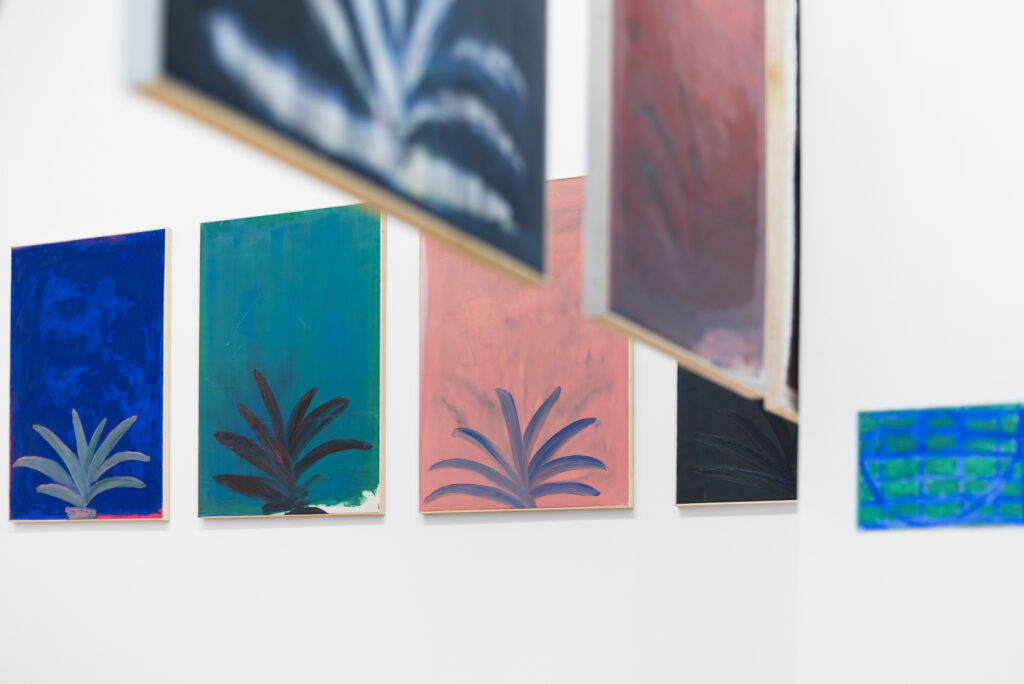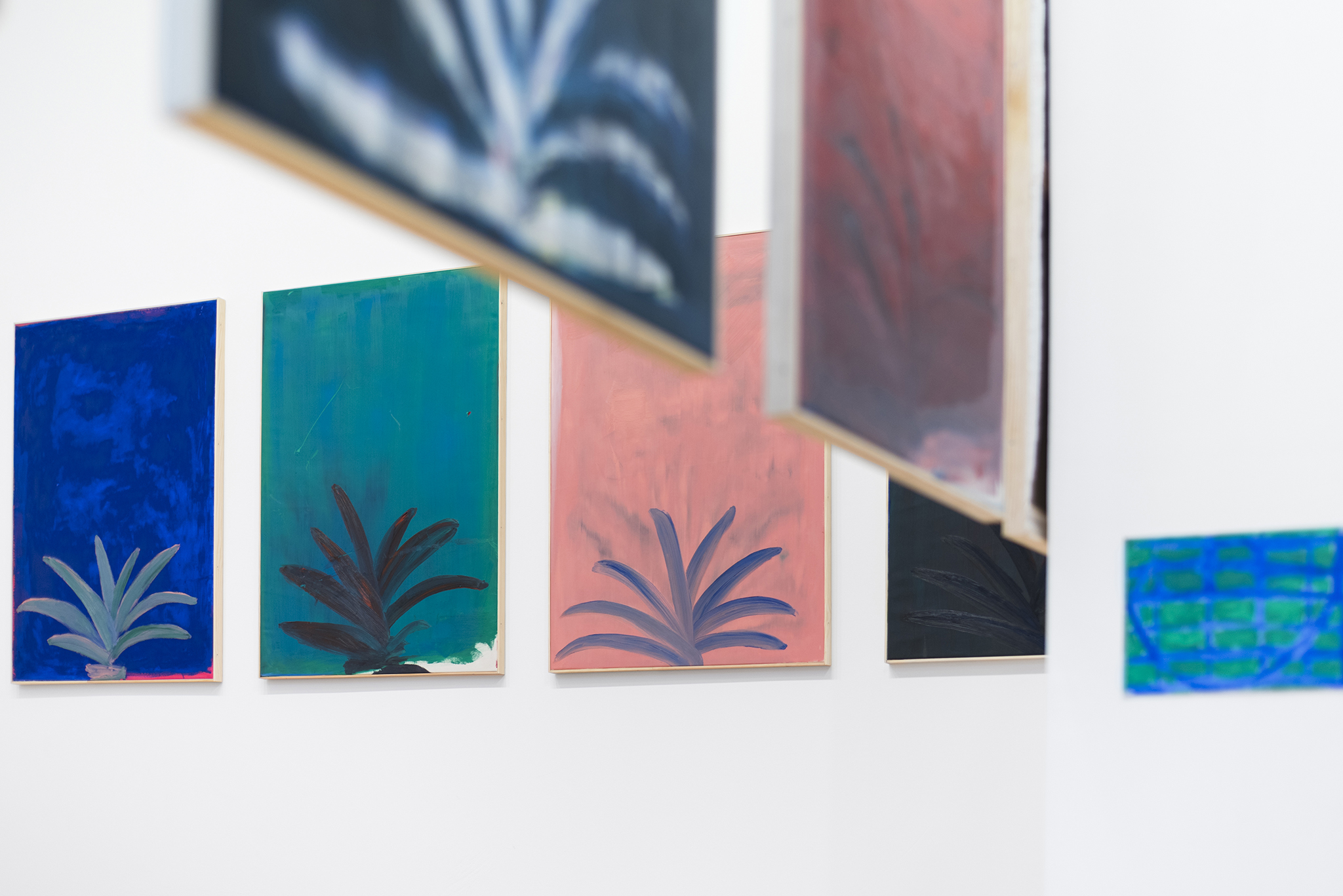Artist: András Király
Title: Finestra
Venue: Viltin Gallery, Budapest, Hungary
Photos: Réka Hegyháti / all images copyright and courtesy of the artist and Viltin Gallery, Budapest

’Now, leaving other things aside, I’ll tell you how I do it when I paint. First of all, where I am to paint, I draw a rectangle of any size I like, at right angles, which I regard as an open window through which I look at what I am going to paint.’
(Leon Battista Alberti: On Painting, 1436)

The window is a well-defined plane, usually a square, a casement, through which the elements of one space (set) can blend with or separate from the elements of another space. If it is closed, you can still see through it, if it is darker in one space, it acts as a mirror in the other, if it’s well insulated, it frogs ip, grows ice flowers during winter, etc.
Since Alberti, the window has been the central metaphor of European panel painting, in which (out)seeing constitutes the primary relationship between the individual and the ( outside) world. In Matisse’s early window paintings, exterior and interior space are already mixed in the plane of the canvas. In his 1914 painting, Porte-fenêtre à Collioure (French Window in Collioure), the window motif extends to the edge of the picture, the ’view’ filled with a dull blackness.
‘Just as the painting, isolated from the wall by the frame, in no way offers a window onto another world, so the painting does not separate itself from the viewer’s inner world, but seeks to reach it: through the gaze, the viewer can penetrate the work and perhaps discover himself.’
(Isabelle Monod-Fontaine)







András KIRÁLY’s canvases, now on display, were inspired by another window seen through the window of his sub-lease in Rome, to continue his analysis of painting as a mental activity, to explore the role of the painter, the criteria of painting, to continue the examination of himself and the habits of the community and society, which was introduced five years ago in the exhibition “How are you on a scale of one?”. We see the same plant motif on 11 monochrome canvases, hung in space, accessible in a circular fashion so that we can occasionally move from one space to another. A frieze of paper pictures runs around the wall, a kind of abscissa that traces the ongoing reflection and experimentation. This is complemented by photographs of the Roman window and descriptions of two art-scientific theories: one is Alberti’s theory of the window, an early record of Renaissance perspective painting, and the other is a model of self-awareness developed after the Second World War, the ‘Johari window’.
